Rear view
The rear of the server provides access to several connectors and components.
Rear view with six PCIe slots
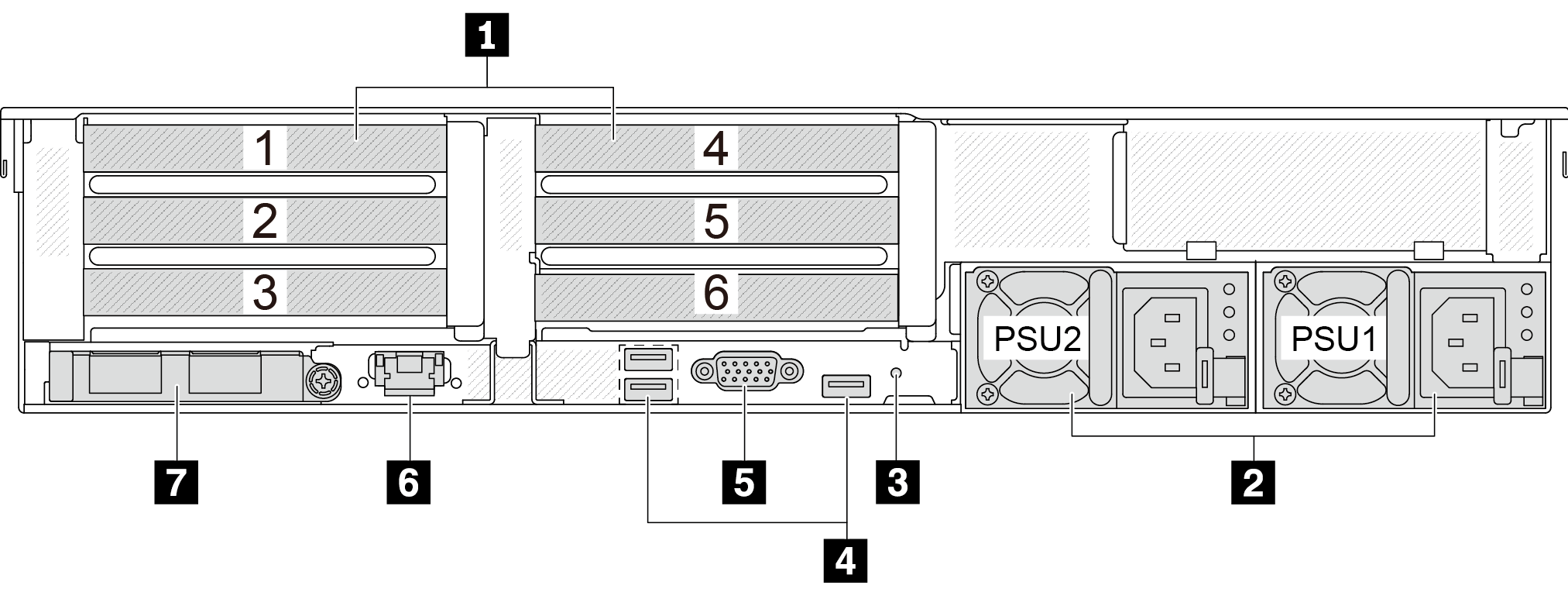
| Callout | Callout |
|---|---|
| 1 PCIe slots | 2 Power supply units |
| 3 NMI button | 4 USB 3 (5 Gbps) connectors (3) |
| 5 VGA connector | 6 XCC system management port |
| 7 Ethernet connectors on OCP module (optional) |
Rear view with eight PCIe slots
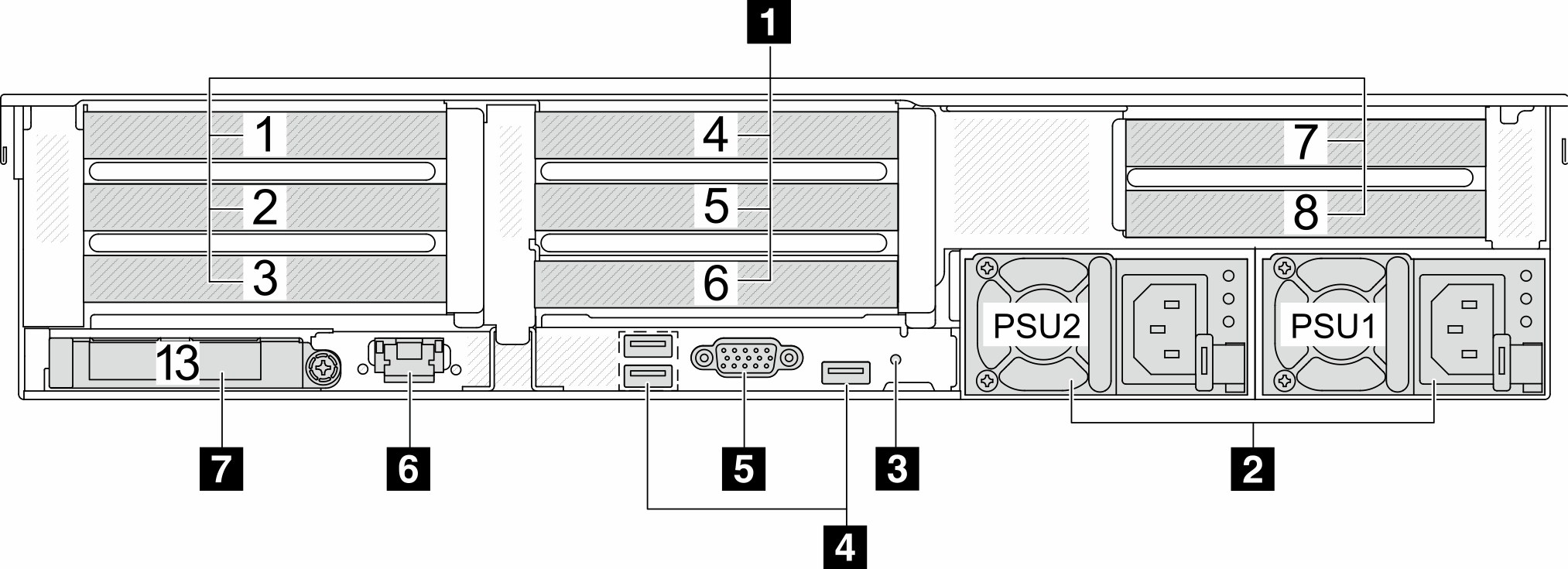
| Callout | Callout |
|---|---|
| 1 PCIe slots | 2 Power supply units |
| 3 NMI button | 4 USB 3 (5 Gbps) connectors (3) |
| 5 VGA connector | 6 XCC system management port |
| 7 Ethernet connectors on OCP module (optional) |
Rear view with ten PCIe slots
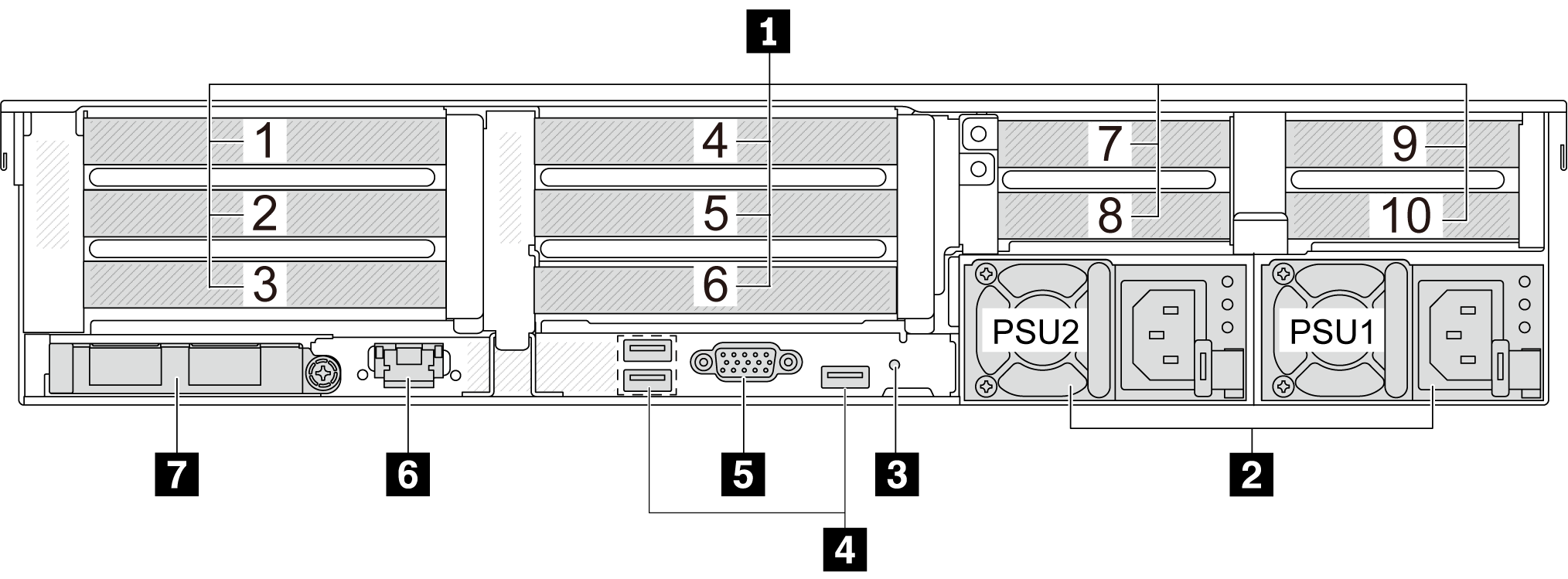
| Callout | Callout |
|---|---|
| 1 PCIe slots | 2 Power supply units |
| 3 NMI button | 4 USB 3 (5 Gbps) connectors (3) |
| 5 VGA connector | 6 XCC system management port |
| 7 Ethernet connectors on OCP module (optional) |
Rear view with four 2.5-inch rear drive bays and six PCIe slots
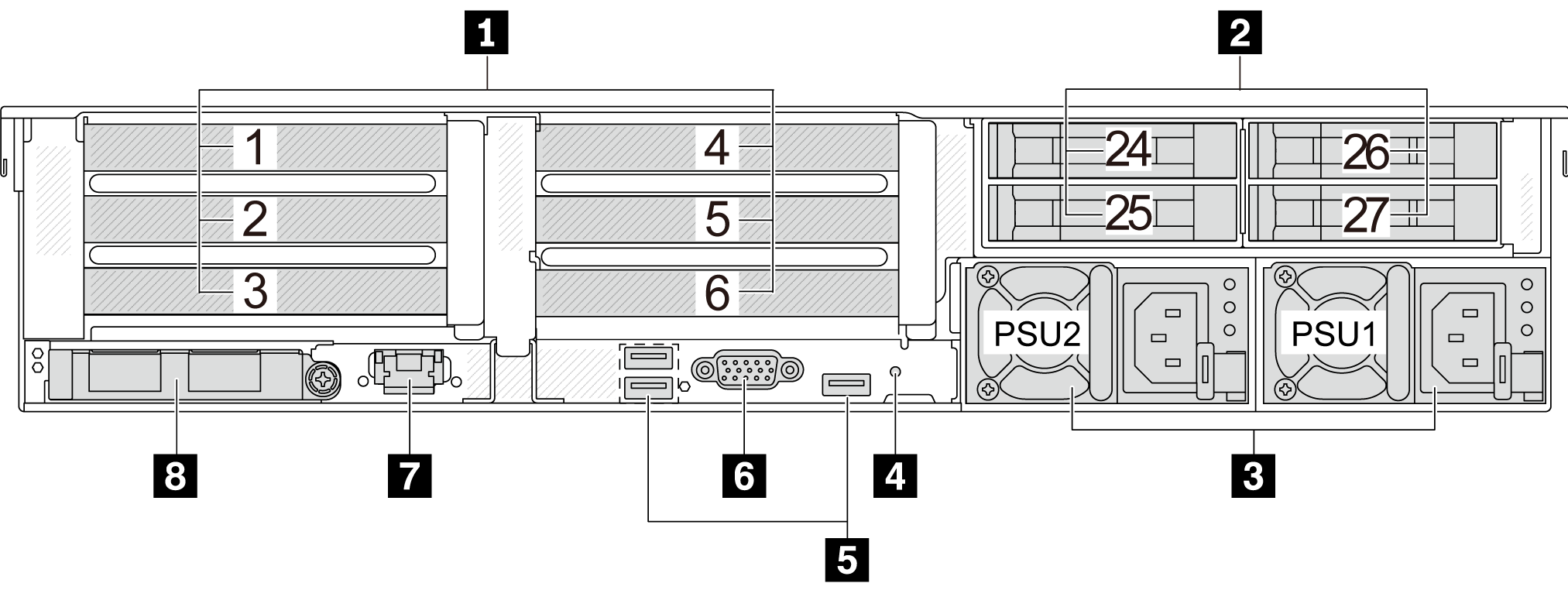
| Callout | Callout |
|---|---|
| 1 PCIe slots | 2 Rear 2.5-inch drive bays (4) |
| 3 Power supply units | 4 NMI button |
| 5 USB 3 (5 Gbps) connectors (3) | 6 VGA connector |
| 7 XCC system management port | 8 Ethernet connectors on OCP module (optional) |
Rear view with eight 2.5-inch rear drive bays and four PCIe slots
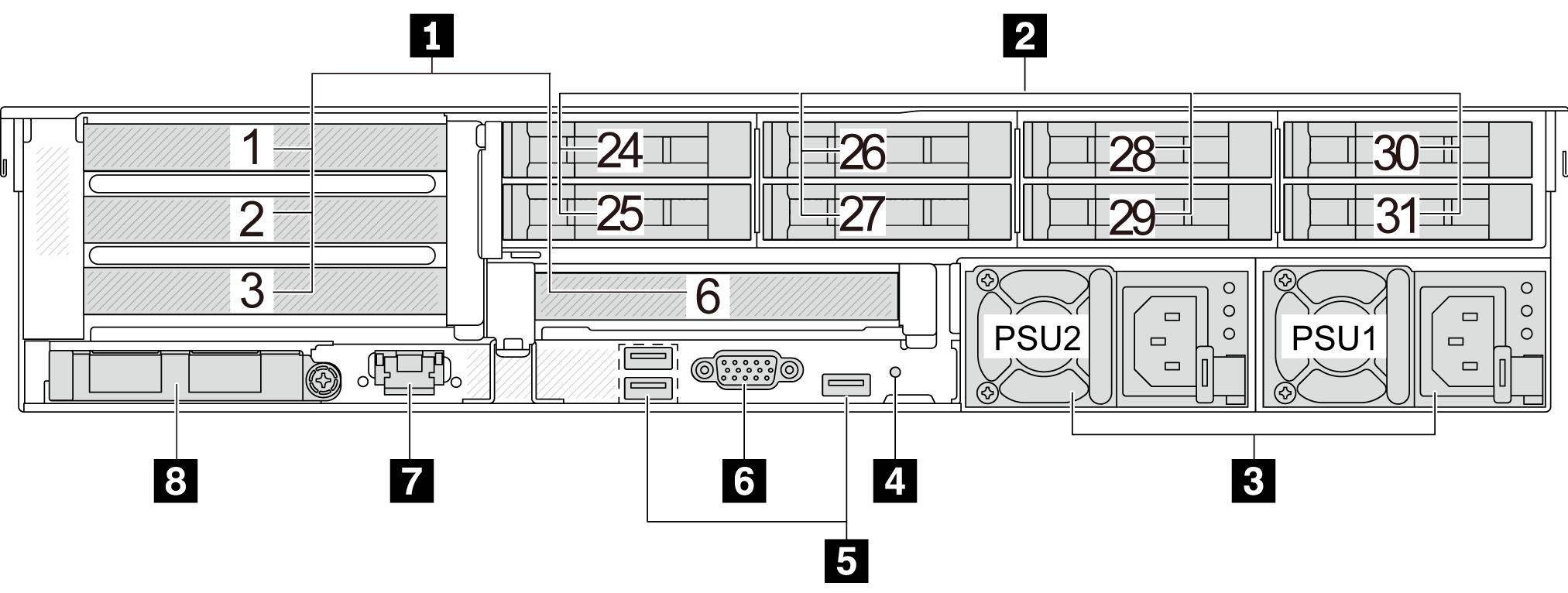
| Callout | Callout |
|---|---|
| 1 PCIe slots | 2 Rear 2.5-inch drive bays (8) |
| 3 Power supply units | 4 NMI button |
| 5 USB 3 (5 Gbps) connectors (3) | 6 VGA connector |
| 7 XCC system management port | 8 Ethernet connectors on OCP module (optional) |
Rear view with two 3.5-inch rear drive bays and four PCIe slots
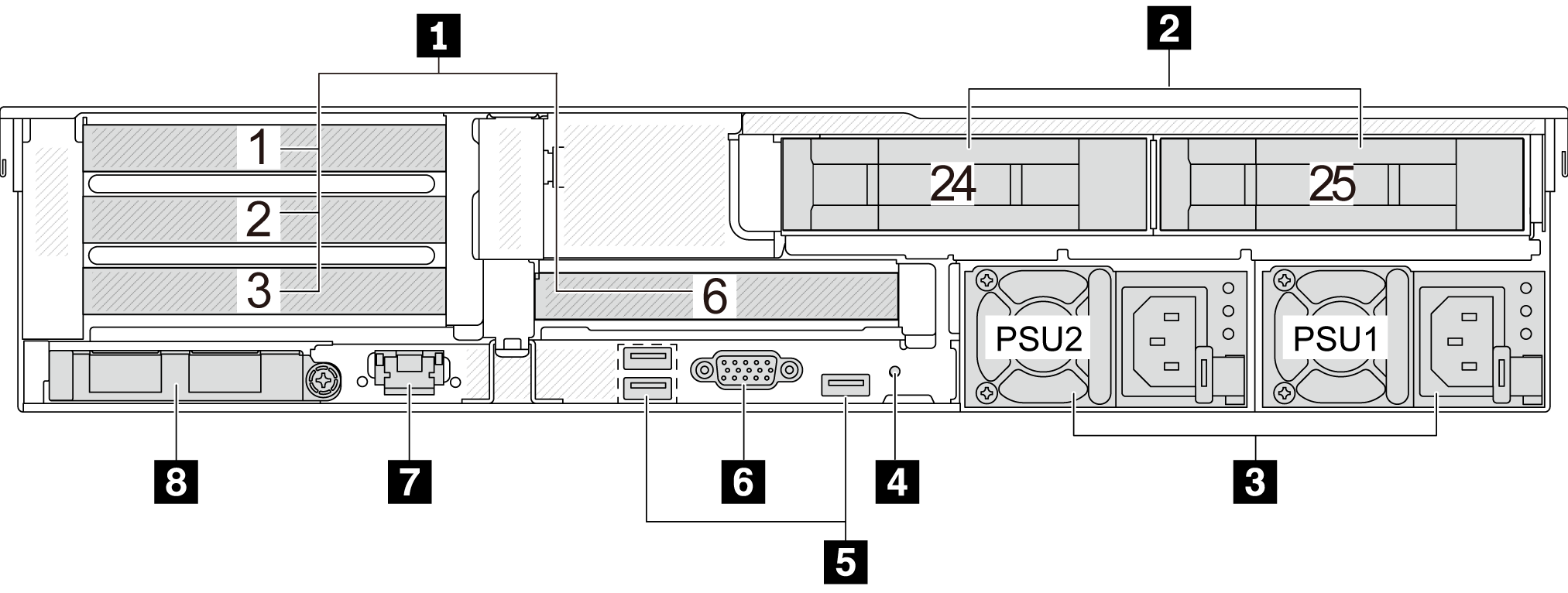
| Callout | Callout |
|---|---|
| 1 PCIe slots | 2 Rear 3.5-inch drive bays (2) |
| 3 Power supply units | 4 NMI button |
| 5 USB 3 (5 Gbps) connectors (3) | 6 VGA connector |
| 7 XCC system management port | 8 Ethernet connectors on OCP module (optional) |
Rear view with four 3.5-inch rear drive bays and two PCIe slots
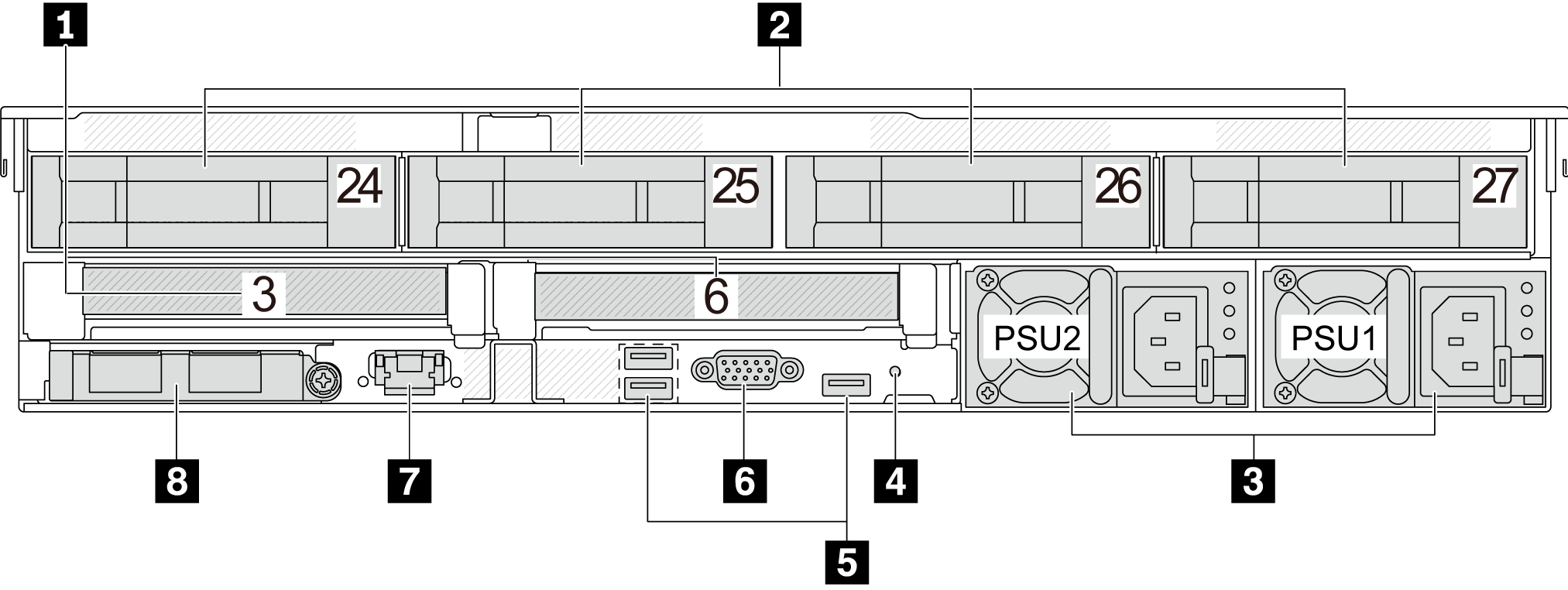
| Callout | Callout |
|---|---|
| 1 PCIe slots | 2 Rear 3.5-inch drive bays (4) |
| 3 Power supply units | 4 NMI button |
| 5 USB 3 (5 Gbps) connectors (3) | 6 VGA connector |
| 7 XCC system management port | 8 Ethernet connectors on OCP module (optional) |
Rear components overview
PCIe slots
The PCIe slots are on the rear of the server and your server supports up to ten PCIe slots. For more information, see PCIe slots and PCIe adapters.
Hot-swap drives and drive bays
The drive bays on the front and rear of your server are designed for hot-swap drives. The number of the installed drives in your server varies by model. When you install drives, follow the order of the drive bay numbers.
The EMI integrity and cooling of the server are protected by having all drive bays occupied. Vacant drive bays must be occupied by drive fillers.
Power supply units
The hot-swap redundant power supply units help you avoid significant interruption to the operation of the system when a power supply unit fails. You can purchase a power supply option from Lenovo and install the power supply unit to provide power redundancy without turning off the server.
On each power supply unit, there are three status LEDs near the power cord connector. For information about the LEDs, see Power supply LEDs.
USB 3 (5 Gbps) connectors
The USB 3.1 Gen 1 (5 Gbps) connectors are direct connect interfaces (DCIs) for debugging, which can be used to attach a USB-compatible device, such as a USB keyboard, USB mouse, or USB storage device.
VGA connector
The VGA connectors on the front and rear of the server can be used to attach a high-performance monitor, a direct-drive monitor, or other devices that use a VGA connector.
XCC system management port
The server has a 1 GB RJ-45 connector dedicated to Lenovo XClarity Controller (XCC) functions. Through the system management port, you can access the Lenovo XClarity Controller directly by connecting your laptop to the management port using an Ethernet cable. Make sure that you modify the IP settings on the laptop so that it is on the same network as the server default settings. A dedicated management network provides additional security by physically separating the management network traffic from the production network.
Ethernet connectors
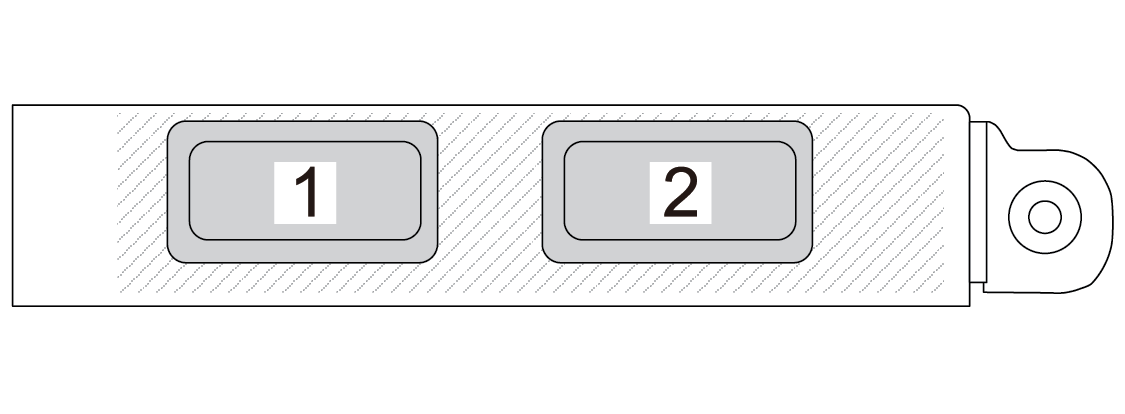
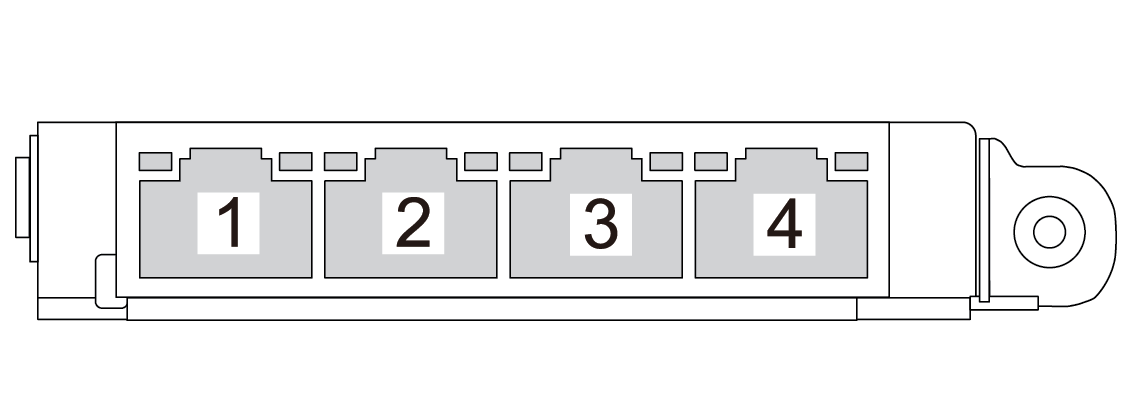
The OCP module provides two or four extra Ethernet connectors for network connections. By default, any of the connectors on the OCP module can function as share management connectors.